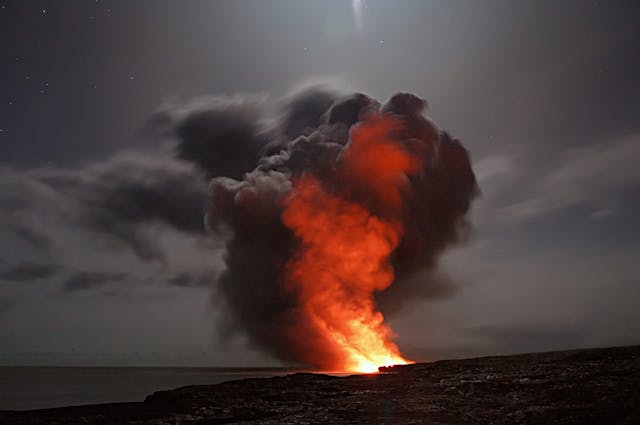Every year, Australian homeowners face the challenge of preparing for fire season. This task involves securing your property and making important decisions to protect your loved ones. Understanding the steps to prepare your home can make a significant difference in safeguarding against potential fire hazards.

One of the most important considerations is ensuring you have right equipment, such as affordable fire fighting pumps, high-pressure fire fighting pumps and portable water pumps, to protect your property in the event of a fire. These kinds of options can help supply water to critical areas, potentially preventing fires from spreading. In addition, creating defensible space around your home and maintaining clear access routes for emergency services is also crucial to reducing fire risk.
Create a Bushfire Survival Plan
Preparing a bushfire survival plan is important for your safety, and you can start by assessing your property’s risk level. Look for nearby bushland, grass, and trees that could catch fire. Clear these areas to reduce flammable material.
Decide in advance what you’ll do if a bushfire approaches. A written plan will help prevent last-minute panic. Include evacuation routes, a meeting spot, and what needs to pack, like important documents and medications. Consider everyone in your household, including pets.
Communicate your plan with family members. Make sure everyone knows their role. Assign tasks like contacting emergency services and packing the emergency kit. Regular drills help reinforce the plan.
Keep your bushfire survival plan up to date. Review it each fire season and make changes as needed.
Prepare an Emergency Kit
An emergency kit is important for staying safe during Australia’s fire season. Start by packing important items like water, non-perishable food, and a first aid kit. This guarantees you have the basics to sustain you and your loved ones.
Keep important documents safe and include them in your kit. These could be identification papers, insurance details, and any necessary prescriptions. Storing them in a waterproof container will help protect them from damage.
Include a flashlight with extra batteries, a portable charger for your phone, and a battery-powered radio. These will keep you informed and connected in case power is lost.
Add clothes and personal hygiene items for each family member. This includes items like bottled hand sanitizer and face masks. It’s helpful to keep everything in a sturdy, easy-to-carry bag.
Finally, review your kit regularly and update it as needed. Checking these items before fire season can help keep you prepared.
Clear Vegetation Around the House
To prepare for fire season, focus on keeping the area around your home clear. Remove any plants, shrubs, and trees that are within 10 meters of your house. This space helps prevent fires from spreading to your home.
Trim the branches, especially those close to the roof and walls. This not only reduces fire risk but also keeps gutters clear of leaves and twigs.
Remove dry leaves, fallen twigs, and debris from the ground. This can fuel fires and increase the risk to your home during fire season.
Install Metal Gutter Guards
Installing metal gutter guards is an effective way to protect your home during fire season. These guards help keep leaves and debris out of your gutters, reducing the risk of blockages. Blocked gutters can trap embers, which can start fires. By keeping gutters clear, you make your home safer.
Metal guards are also durable and can stand up to harsh weather conditions. Unlike plastic or foam options, metal is less likely to deteriorate or burn. This durability makes them especially useful in fire-prone areas. They provide a good defense against embers during bushfires.
Another advantage of metal gutter guards is their minimal maintenance. Once installed, you don’t need to clean your gutters as often. This saves you time and effort. Regular checking is still important, but you’re less likely to find your gutters full of debris.
Seal Gaps and Vents to Prevent Ember Entry
To protect your home during fire season, it’s important to seal gaps where embers might enter. Ember seals are made from materials that resist fire. You can use these to block gaps around doors, windows, and vents. This simple step can greatly reduce the risk of embers causing a fire inside your home.
Air vents are common entry points for embers. Consider installing ember-resistant vents. These vents have special designs that keep embers out while allowing air to flow. Cover your vents with metal mesh screening between 1/16-inch and 1/8-inch. This helps in blocking ember intrusion.
Check for any openings or cracks in walls and around windows. You should use caulk or fire-resistant sealant on these gaps. This can provide an added layer of protection against embers finding their way inside. By focusing on small details like sealing gaps, you can make your home much safer during fire season.
Stay Informed with Local Alerts
To be ready for fire season, it’s important to track updates and alerts in your area. Regularly check weather updates and fire danger ratings. This helps you know the risks and what actions you might need to take.
Use local resources to get accurate information. You can find current fire season information on the fire service website. Staying connected with these updates will help you respond quickly if needed.
Set up notifications on your phone or devices for any emergency alerts. This can keep you informed about sudden changes. It’s also helpful to have a trusted friend or family member to share information with, guaranteeing everyone stays informed.
Conclusion
Preparation is key when facing Australia’s fire season. By taking steps to make your home fire-ready, you can increase the safety of your property and family.
Clear away flammable debris, maintain your garden, and guarantee all equipment is accessible. Regularly check updates and alerts to stay informed. Make an evacuation plan and practice it with your family.
Being ready isn’t just a choice; it’s a necessity. Stay vigilant and proactive to protect what matters most.
















Add Your Comment